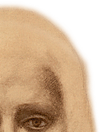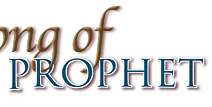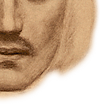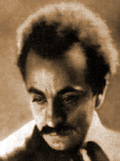  |
|
Wikipedia’s biography of Gibran, with imbedded links to numerous other people, places, and events during his life. Also included are a few
photos and a listing of his works. |
 |
|
A comprehensive website from a Lebanese admirer, Mira, the site contains
a biography, copies of Gibran’s writings and artwork, as well as photos of Gibran’s native village, B’Sharri, and the museum there. |
|
Numerous YouTube videographers are apparently fans of Gibran, as witnessed by plugging Gibran’s name into their Search engine. Among the offerings is this 10-minute “video retrospective on Gibran’s life and works” by a member identified as “utterboxtv.”
|
|
 |

|
|
Featured soloist on two of the ballads on our Song of The
Prophet CD, Kim Angelis (at right) learned to read music before her ABC’s. Kim’s many albums demonstrate an impressive
range — from classical pieces to bluegrass swing, from rock & roll rhythm to folk softness — all pleasingly seasoned with her
characteristic “gypsy spice.” |
|
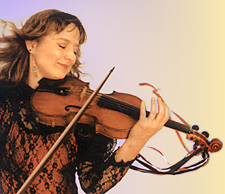 |
|
|
If you’re aware of any Gibran-related websites that, in your opinion, should be on this list, please let us know by writing to:
|
|
  |
|
A good collection of quotations from most of Gibran’s published works. (An expanded list of
quotations from The Prophet can be found by clicking on another link on this page.) It’s easy to see why Gibran continues to
be one of the most quoted authors of all time. |
  |
|
Review of author Robin Waterfield’s book, Prophet: The Life and Times of
Kahlil Gibran, in The New York Times. Waterfield’s book, in the opinion of ProphetSong’s Mark Haskett, is probably the most comprehensive,
objective retelling and analysis of Gibran’s life, as critical as it is laudatory. The description of the historical context — a portrait of the
changing times in which Gibran lived — is especially illuminating.
|
 |
|
Information and photographs of the beuatiful marble and bronze
memorial to Gibran, located across from the British Embassy in Washington, DC. |
|
Actor/dramatist Michel (pronounced Mi-chelle) Ashkar is perhaps best known as the author of “A Child of Life,” a deeply moving account of Gibran’s life… at times sad, romantic and uplifting. Presented at universities around the U.S. and as far away as London and Beruit, the 90-minute one-man show has been called “...a tour de force” and “a bridge between the two Shakespeares.”
|
|
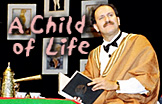 |
  |
|
Hilarious parody of a newer compendium of Gibran’s works, written in the style of his poetry by an English professor who is definitely no fan of Gibran. People who revere Gibran overmuch should stay away; but those who can take the humor, and still find his words as insightful as ever, can enjoy it.
|
|
This modern-day sculptor is not to be confused with the author and poet honored
on these pages, though he is Gibran’s younger cousin — and along with his wife, Jean, wrote one of the better biographies of his more famous
namesake.
|
|

|
|
A Facebook page devoted to all things Mary Haskell (later Mary Haskell Minis). In addition to managing a Boston school for girls, mentoring and supporting Kahlil Gibran through much of his career, Mary spent much of her later life traveling and working in the field of women’s rights. Or simply Google “Mary Elizabeth Haskell” for more on her life, and her love letters to Gibran. |
|
 |
 |
|
The listing of materials donated to the University of North Carolina by Mary Haskell (after her marriage to Jacob Minis). As well as Minis family papers, the collection includes teaching materials Mary used at her young women’s school in Boston, photos of Gibran, her personal diary, and some 23 years worth of her private letters to Gibran. The letters and diary were what changed our understanding of the man behind the works. Access is restricted.
|
|
Editor’s Note: As in the case of anyone who brings a new message and/or leaves behind a popular legacy — whether author, artist or spiritual teacher — it becomes our job to differentiate their body of work from their “person.” While many sites on the web are almost worshipful of Gibran, other sources (including a few listed here) are quick to diminish him by pointing out his personal flaws.
Gibran himself seemed acutely aware that he could not live up to the images of the literary figures he created. He had
feet of clay. . . so what else is new? If we demand perfection from our artists or teachers before we can enjoy or benefit from their works, perhaps
that attitude points to a flaw in us, and ultimately leaves us diminished.
|
|
